Table of contents
Table salt , also Salt , table salt or cooking salt is the most commonly consumed mineral in the human diet. This poses health risks if used inappropriately.
Use in the kitchen:
At least at the beginning of 2019, salt is the most common ingredient in terms of the number of recipes that contain it as an ingredient. That's why it's number one in the list of ingredients here. However, you can rearrange the list according to your needs. Please try it out. For example, you can reverse the order or sort it by carbohydrates or protein or fat, or by fat composition LA:ALA, i.e. omega-6 to omega-3 fatty acid ratio, etc.
Table salt "seasons" almost all dishes and foods. However, people in Western civilization consume far too large quantities of salt 1 . This is not only because it is used in excessive quantities for cooking and subsequent seasoning (salt shakers), but also because salt is found in many processed foods.
Foods that contain a lot of salt include bread, meat, sausages, milk and cheese. Ready-made products and fast food contain even more salt. Our taste buds get used to increasingly salty foods. According to the award-winning book Salt Sugar Fat, we develop a great need for salt. Click for the book review . Such people find foods with little or no salt bland. It takes three months of reducing or even giving up to get rid of this feeling. The reward is significantly better health and relief for the heart and other organs.
Adding table salt reduces the "solubility" of the organic seasonings in the food and thereby increases their perception in taste. 2 This is why people who consume a lot of salt tend to find low-salt foods bland over time.
It is best to avoid ready meals and eat fresh food. Season more with herbs, spices or other flavorings (lemon, onions, garlic, etc.) and only add a little table salt at the end. Raw food naturally contains the necessary amounts of salt. 3 A balanced diet based on raw food does not require any additional salt intake. With cooked food, salt is dissolved when the water is poured away, so add a little salt.
Vegetables are usually cooked in salt water so that the cell walls are more permeable through osmosis. This shortens the cooking time so that more active ingredients are retained. Pulses, on the other hand, should be salted after cooking, otherwise the cooking time will be longer.
Vegan recipe for decorative flower salt:
For the flower salt you need a cup of salt and a cup of dried flowers without stems (e.g. lavender, marigolds, nasturtiums, rose petals, cornflowers, daisies, dandelions, mallow, chive flowers). Before you grind the ingredients in a mortar, food processor or blender to the desired degree of fineness, pluck the petals from the flower calyx. The decorative flower salt gives dishes a distinctive and intense aroma.
| Not only vegans or vegetarians should read this: Vegans often eat unhealthily. Avoidable nutritional mistakes . |
Shopping - where to buy?
Salt is available in various forms and of different origins or qualities in practically all grocery stores. Iodine-free salt and iodized salt are available in supermarket chains such as Coop , Migros , Denner , Volg , Spar , Aldi , Lidl , Rewe , Edeka , Hofer etc., in health food stores, organic shops, drugstores or organic supermarkets such as Denns and Alnatura . Salt is an ingredient that does not come from agricultural production. Therefore, salt cannot be certified organic. Salt advertised as controlled organic is misleading to consumers.
The main differences are grain sizes and origin. In various countries, table salt is mixed with iodine . This is to ensure the supply of iodine in areas with iodine-poor soil. If you cook and do not use the official salt, you may need to take in iodine in another form, e.g. from algae. See the link in the box.
Potassium fluoride is also added in some countries. In addition, table salt crystals are usually coated with a separating agent so that they trickle down better. Products with added sodium fluoride (to improve dental health) and folic acid are also available. 7,1
Sea salt, fleur de sel, special salts (e.g. Himalayan salt) or bouillon and other seasonings all contain sodium chloride. Therefore, they do not help to reduce salt intake. 8
Storage:
Since salt tends to absorb moisture from the surrounding air, it should be stored in an airtight container or in a dry environment. This way it will last for years. There is no risk of infestation by insects, fungi or bacteria.
Ingredients - nutritional value - calories:
Chemically speaking, table salt is sodium chloride (NaCl). The sodium content is 40%. This means that 1 g of salt contains 0.4 g of sodium (Na). The chloride is calculated and not listed in ingredient tables, because chloride is only absorbed through salt. When commercially available table salt is extracted, 1% to 3% of other salts remain in the rock salt and sea salt. The salt that is sold is mainly purified, refined salt.
The World Health Organization (WHO) recommends less than 5 g of salt per day. Unfortunately, the reality is different: In Switzerland, the average salt consumption is currently around 9 grams per person per day. 4 While the American Heart Association (AHA) recommends 3.8 grams of salt 5 , the Institute for Nutritional Medicine in Munich sets the daily requirement for adults at 550 mg of sodium. 6 We should aim for a total of 1.4 to 2.5 g of table salt per day (0.56-1 g of sodium) as a maximum per day.
For each of our recipes and each ingredient, you will find the values of all essential substances, including the amount of salt. The sodium is then already extrapolated to table salt. We show salt according to the recommended maximum value of the GDA (2.4 g/day of sodium) as 100% for a daily amount. This corresponds to 6 g of salt and always includes the salt already contained in the ingredients.
GDA stands for Guideline Daily Amount , but this was developed by the European Food Industry Association FoodDrinkEurope ( FDE, known as CIAA before 2011). It is based on the recommendations of Eurodiet . In Germany, the GDA label appears in small barrel-shaped fields on packaged foods. Australia uses a modified form as the Daily Intake Guide (DIG). In the USA, the 2012 values are used as Facts Up Front .
There is also the Reference Intake (Ris), which no longer distinguishes between women, children and men, but is otherwise the same: for example, 6 g of salt is recommended. In Great Britain in particular, the even more easily recognizable Traffic Light Rating System is used with the traffic light colors green, yellow and red on the packaging. For table salt, green stands for up to a maximum of 0.3 g of salt in 100 g. Yellow means between 0.3 and 1.5 g and red is more than 1.5 g or from 1.8 g per portion. It is similar for drinks: green 0.3 g/100 g, but yellow up to 0.75 g and red from 0.75 g or 0.9 g/portion.
Health aspects - effects:
What does salt do in the body? Sodium chloride is an important mineral for our body. It regulates the water balance, tissue tension and maintains the acid-base balance. Salt also plays an important role in bone formation and digestion and is involved in the transport of nerve impulses. 9
The body of an adult contains about 150 to 300 grams of table salt and needs one to three grams daily to compensate for the loss through sweat and excretions. In some diseases or excessive sweating, the daily loss of table salt can even reach 20 grams. 2
Salt is essential to life, but certainly not a superfood. Too much sodium chloride can increase blood pressure in the body and thus significantly increase the risk of cardiovascular disease (plus subsequent damage). The American Heart Association (AHA) attributes 15% of the 2.3 million deaths from cardiovascular disease (2010) to excessive salt consumption. Our hormones monitor the salt content in the body and excrete excess sodium chloride with a lot of water. This damages kidney function and increases the amount of water in the body, and therefore weight. 9
However, if you consume less than 2 g of salt per day, you risk dehydration because you don't feel thirsty. 2 However, people rarely suffer from sodium deficiency. There was no sodium deficiency in earlier times either. Only in isolated cases, such as certain diseases, can a lack of sodium be noticeable. 11,12,13,14
Since it was previously difficult for humans to obtain table salt, the brain rewards salt intake with a dopamine release. The genes responsible for the salt appetite are associated with drug addiction (opiates and cocaine). 2
Since 2011, the Federal Institute for Risk Assessment , the MRI ( Klinikum rechts der Isar Munich ) and RKI ( Robert Koch Institute ) have been trying to reduce consumption to 3.5 to a maximum of 6 grams per day. 1 Reducing the average amount consumed in Germany from twelve to six grams has about the same effect as blood pressure lowering drugs. 10
The preference for the taste of salt is evidently something that is learned. For example, newborn babies react negatively or neutrally to moderate salt concentrations. A preference for salt only develops at the age of 2-3 years after the child has become accustomed to it. 1 Conversely, it takes about three months for the body to adjust its taste sensation and for low-salt food to no longer taste bland. The sense of taste is then even more pronounced and the taste buds then react normally again. Click for the book review (as above).
Dangers - Intolerances:
Is table salt healthy? It always depends on the amount and the condition of the body. A diet with processed foods leads to a greatly increased salt intake. Salt consumption is also constantly increasing in developing countries. Read the book review Salt Sugar Fat . You will then know why Western society is actually eating itself sick.
If you like reading English: Here you can watch this excellent short video by Hashem Al-Ghaili about the effects of salt in our body: - what is too much, what is too little?
In mice, high salt consumption led to cognitive deficits and intestinal inflammation, as researchers from Weill Cornell Medical College report in the journal Nature Neuroscience . 16
How high is the lethal dose of salt? The lethal dose of salt for an adult is about ten tablespoons of pure table salt. This corresponds to about 0.5 to 5 grams per kilogram of body weight. 8 No normal person would consume this amount intentionally and without the body's defense mechanisms. For small children, however, just a teaspoon is enough to cause salt poisoning - a very salty meal can be life-threatening. 2,15
Use in medicine:
In modern medicine, after severe blood loss, eg after an operation or an accident, a 0.9% solution of sodium chloride in water is administered to replenish the blood volume (also called isotonic or physiological saline solution). The same solution is also used as a carrier solution for medication or to keep the venous access open. It is used to rinse catheters, wounds, abrasions, nose or eyes and to gargle. It is also used to rehydrate patients.
The healing effects of salt baths are relied upon for skin diseases. Spa stays by the sea or in the salty air near salt mines also cure breathing problems and respiratory diseases. 8
Folk medicine - natural healing:
In ancient times and in the Middle Ages, salt-based medicines were said to have a drying and warming effect. Salt was used in wound dressings, plasters, ointments and powders. The skin of newborns was also rubbed with salt to strengthen it. In the Middle Ages, it was also used for the external treatment of ulcers and wounds, as it was considered to have an astringent, cleansing and soothing effect. 8
Salt was also sprinkled on wounds to prevent inflammation, which was very painful. Pure salt destroys all types of cells (including microorganisms such as bacteria and fungi) through osmosis. The same mechanism prevents food preserved in table salt from spoiling.
Occurrence - Origin:
Where does salt occur? Table salt can be obtained from sea salt or rock salt. Today, almost every country in the world produces salt in smaller or larger quantities - whether in solid or liquid form. Due to the high transport costs, the markets are usually limited to specific regions. 17
General information:
History tells us that most ancient civilizations mined salt. The Sumerians and Babylonians used salt to preserve food. Wikipedia emphasizes that the "white gold" was sought after and rare in certain regions. It was therefore transported on salt roads from salt pans and mines to regions with little salt. These salt roads often later became important trade routes.
Thanks to the taxation of salt, many cities became rich in the Middle Ages and grew into wealthy metropolises. The high price of salt meant that farmers could only afford a few meat meals despite slaughtering their own animals, because salt was essential for curing and thus for the meat's shelf life. 2 The foreign word "salary" also testifies to the value that salt used to have: it means "payment of wages or salary in the form of salt". 18
What is salt? Salt is actually just the chemical compound of sodium and chloride, sodium chloride, abbreviated to NaCl. The food industry has turned it into something very special - and in the West we usually have far too much of it, even though it is a substance that the body needs. We recommended the book on this topic, or rather our text on it, above: Salt Sugar Fat, because it can open consumers' eyes. What is table salt (not table salt) or what is cooking salt can be answered in the same way because they are simply synonymous terms. Naturally it is iodine-free salt, but certain countries with iodine-poor soils iodize the cooking salt or table salt.
Table salt is still used today to preserve meat (curing). Nitrite curing salt (with 0.4% to 0.8% sodium nitrite) has an antibacterial effect and gives the cured food a red color. 2 Rock salt is used in its pure form to regenerate the water softening in dishwashers. Around 85% of the rock salt harvest goes to industry, partly to extract chlorine and sodium for caustic soda and other derivatives. Sea salt, especially from the Dead Sea, is very popular in cosmetics as a face mask, peeling or bath salt. Rock salt is also used to make salt lamps.
The finer the salt, the faster it dissolves and the stronger the taste.
Types of salt:
Various exotic gourmet salts such as Himalayan salt, Persian blue salt or Ayurvedic salt are praised in advertising as being particularly tasty, beneficial to health or several million years old. It's good business! There is no scientific evidence for any of these special effects. In addition, all of the large salt deposits on earth are approximately the same age. 19
Sea salt is table salt obtained from sea water (mostly from salt marshes and through evaporation of the water). Sea salt accounts for an estimated 30% of the world's salt production, the rest is rock salt. Most of it is washed and sold as table salt. Untreated sea salt still contains a residual moisture content of up to 5% water.
Fleur de Sel (salt flower) is the most expensive type of sea salt because it consists mainly of sodium chloride (usually over 97%). This salt is only produced on hot, windless days when a very thin layer of salt forms on the water surface through evaporation. Fleur de Sel is scooped off by hand using a wooden scoop. 20 Grey salt (sel gris) is produced beneath the salt flower. The grey colour comes from suspended matter from the algae Dunaliella salina and from sediment particles that are trapped in the salt crystals. Sel gris has a high residual moisture content. Therefore, it must be ground in a rust-proof salt mill or mortar. 20 Other examples are Hawaiian salt or Flor de Sal (Spanish for Fleur de Sel). None of the empty advertising promises justify the high selling price of these salts. To the question: Most expensive salt in the world? We deliberately have no answer.
Is table salt sea salt? Rock salt (halite) is found in deeper soil layers or in salt deserts. Marketing professionals like to call it "primeval sea salt". In the past, salt was laboriously extracted by hand in salt mines. Today, it is extracted by drilling, blasting or open-cast mining. Well-known and commercialized rock salts are Himalayan salt , black Kala Namak (ground pink) from India or Persian blue salt . The pink color of Himalayan salt (from Pakistan, by the way) comes from iron oxide compounds. 19 Kala Namak is an artificially produced seasoning (previously made from rock salt, iron sulfide, charcoal and spices). 21 Persian blue salt owes its blue shimmer to the pressure-related changes in the salt lattice. A colorant is often added illegally. 19
How is table salt made? Both sea salt and rock salt can be obtained by evaporation from brine (concentrated salt water). The product is then called evaporated salt . The same thing works with already liquid, underground brine - for example in the Kalahari Desert ( Kalahari salt ).
Alternative names:
Important alternative names for salt are cooking salt, table salt or table salt. Incorrect: Sallz, Salzr, Sakz, Slaz, Zalz, Salsz. The "name in English" is salt, table salt, cooking salt or common salt.
Literature - Sources:
Bibliography - 21 Sources
| 1. | bfr.bund.de/ cm/ 343/ blutdrucksenkung durch weniger salz in lebensmitteln.pdf |
| 2. | Deutschsprachige Wikipedia: Speisesalz |
| 3. | Englischsprachige Wikipedia: Salt |
| 4. | swissheart.ch/ praevention/ gesund-leben/ ernaehrung/ salz.html |
| 5. | spiegel.de/ gesundheit/ diagnose/ ernaehrung schadet zu viel salz im essen wirklich a 1020274.htm |
| 6. | mri.tum.de/ sites/ default/ files/ seiten/ mineralstoffuebersicht maerz 2016.pdf |
| 7. | Deutschsprachige Wikipedia: Natriumchlorid |
| 8. | swissheart.ch/ fileadmin/ user_upload/ Swissheart/ Bilder_Inhalt/ 2.1_Gesund_bleiben/ Salz_Faltblatt_de.pdf |
| 9. | wissenschaft-im-dialog.de /projekte/ wieso/ artikel/ beitrag/ wieso ist zu viel salz schaedlich fuer den koerper/ |
| 10. | assmann-stiftung.de/ salz der praevention von chronischen krankheiten-67 |
| 11. | Deutschsprachige Wikipedia: Hyponatriämie |
| 12. | msdmanuals.com/ de/heim/ hormon und stoffwechselerkrankungen/ elektrolythaushalt/ hyponatri%C3%A4mie niedriger natriumspiegel im -blut |
| 13. | https://www.ndr.de/ ratgeber/ gesundheit/ Natriummangel kann zu Verwirrtheit fuehren, natriummangel100.html |
| 14. | Englischsprachige Wikipedia: Health effects of salt |
| 15. | kinderaerzte-im-netz.de/ news-archiv/meldung /article/ eltern duerfen kindern nicht zu viel salz geben/ |
| 16. | spektrum.de/news/ schadet eine salzreiche ernaehrung dem gehirn/ 1532601 |
| 17. | k-plus-s.com/de/ wissen/ rohstoffe/ salzvorkommen.html |
| 18. | Duden online: Salär |
| 19. | Stiftung Warentest. Speisesalz: Das Märchen vom Wundersalz. Auf test.de |
| 20. | Deutschsprachige Wikipedia: Meersalz |
| 21. | Deutschsprachige Wikipedia: Kala Namak |

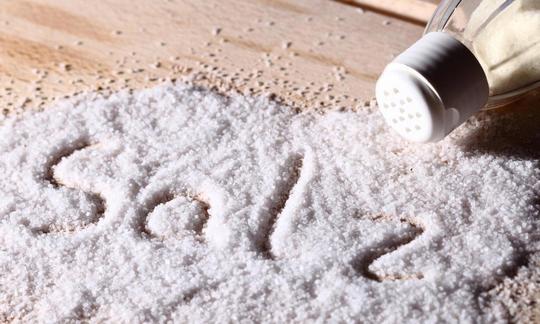

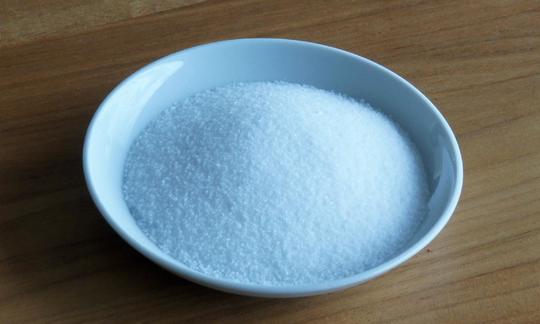

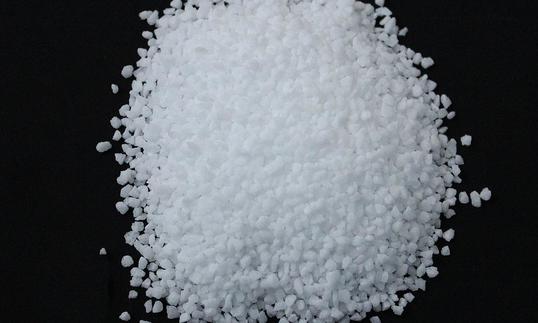

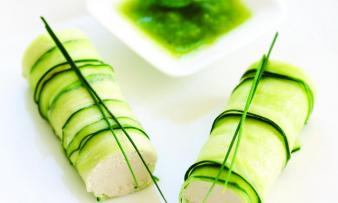
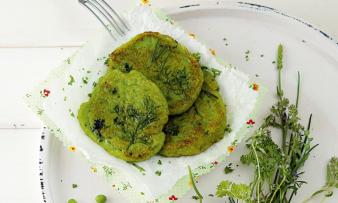
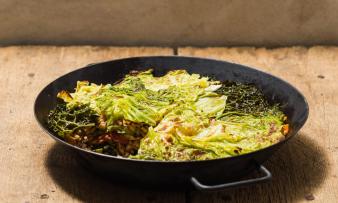





Comments